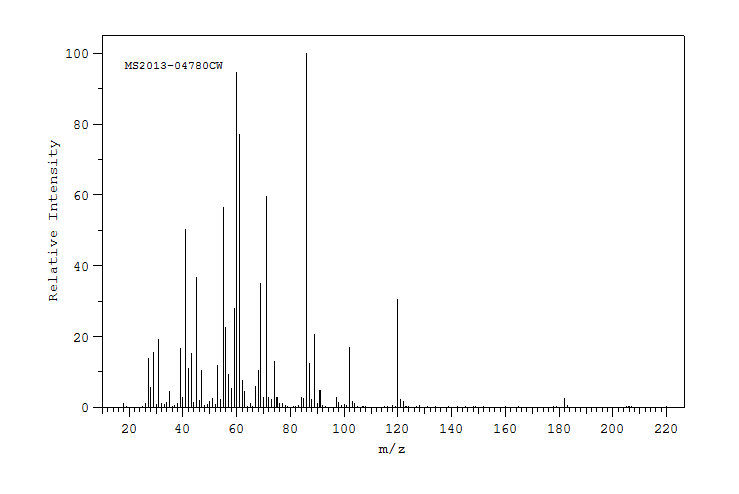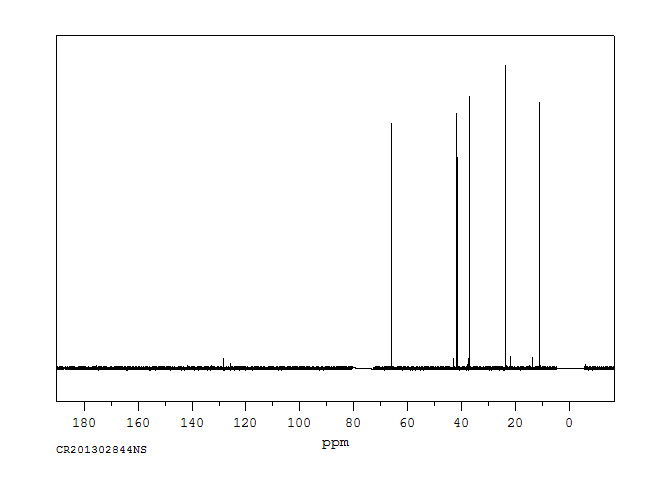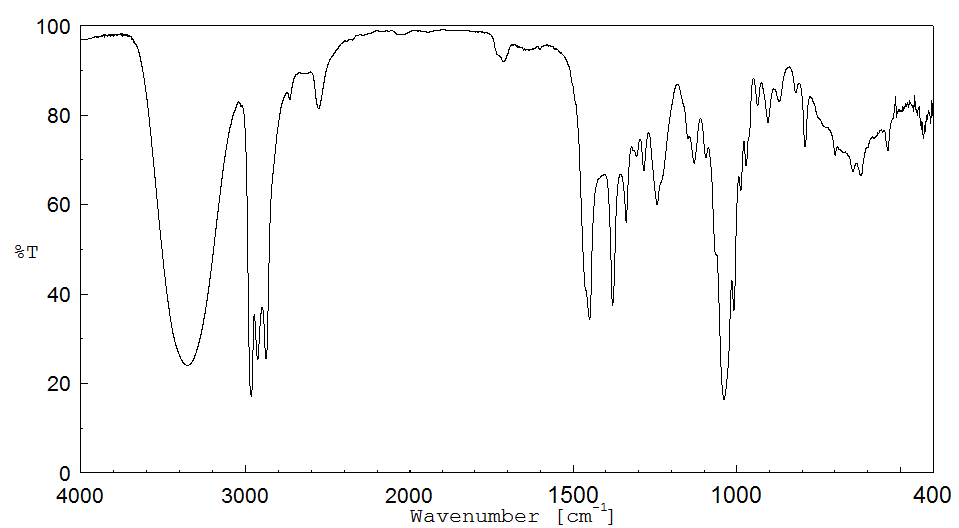3-巯基-2-甲基丁醇 | 227456-33-9
中文名称
3-巯基-2-甲基丁醇
中文别名
——
英文名称
2-methyl-3-sulfanylbutan-1-ol
英文别名
——
CAS
227456-33-9
化学式
C5H12OS
mdl
——
分子量
120.216
InChiKey
RFMHFOPFUZZBAD-UHFFFAOYSA-N
BEILSTEIN
——
EINECS
——
-
物化性质
-
计算性质
-
ADMET
-
安全信息
-
SDS
-
制备方法与用途
-
上下游信息
-
文献信息
-
表征谱图
-
同类化合物
-
相关功能分类
-
相关结构分类
计算性质
-
辛醇/水分配系数(LogP):1.1
-
重原子数:7
-
可旋转键数:2
-
环数:0.0
-
sp3杂化的碳原子比例:1.0
-
拓扑面积:21.2
-
氢给体数:2
-
氢受体数:2
反应信息
-
作为产物:描述:(R)-2-Amino-3-(3-hydroxy-1,2-dimethyl-propylsulfanyl)-propionic acid 生成 2-氨基-2-丙烯酸 、 3-巯基-2-甲基丁醇参考文献:名称:通过从腋窝细菌分离的CS裂解酶裂解半胱氨酸前体,鉴定人腋窝分泌物中的有气味的硫烷基链烷醇及其形成。摘要:已知在棒状杆菌属菌的作用下会形成人腋臭。本身无味的腋窝分泌物。除了已知的臭味酸,我们报告了在人腋窝分泌物中出现了四种臭味的硫烷基链烷醇,即3-硫烷基己基-1-醇(3),2-甲基-3-硫烷基丁烷-1-醇(4),3-硫基戊基戊烷- 1-醇(5)和3-甲基-3-硫烷基己基-1-醇(6)。这些化合物具有刺鼻的汗水/厨房气味,还让人联想到带有水果味的洋葱,其感知阈值在pg / l范围内。假定这些化合物的无味前体是半胱氨酸缀合物。实际上,发现从人腋下获得的属于棒状杆菌的细菌分离物具有从半胱氨酸缀合物释放各种硫醇的酶促能力。metC基因,从腋窝分离株纹状体棒状杆菌Ax20中克隆了已知编码胱硫醚-β-裂合酶的蛋白,并在大肠杆菌中异源表达。纯重组酶可裂解各种半胱氨酸结合物,并具有与野生型细胞匀浆相似的底物特异性。最后,将重组酶与无味的腋窝分泌物一起孵育,并释放出有味的硫醇。DOI:10.1002/cbdv.200490079
文献信息
-
Odorous Impact of Volatile Thiols on the Aroma of Young Botrytized Sweet Wines: Identification and Quantification of New Sulfanyl Alcohols作者:Elise Sarrazin、Svitlana Shinkaruk、Takatoshi Tominaga、Bernard Bennetau、Eric Frérot、Denis DubourdieuDOI:10.1021/jf062582v日期:2007.2.1Specific extraction of volatile thiols using sodium p-hydroxymercuribenzoate revealed the presence of three new sulfanylalcohols in wines made from Botrytis-infected grapes: 3-sulfanylpentan-1-ol (II), 3-sulfanylheptan-1-ol (III), and 2-methyl-3-sulfanylbutan-1-ol (IV). The first two have citrus aromas, whereas the third is reminiscent of raw onion. In addition, 2-methyl-3-sulfanylpentan-1-ol, which has a raw onion odor, was tentatively identified. Like 3-sulfanylhexan-1-ol (I), already reported in Sauternes wines, compounds II, III, and IV were absent from must. They were found in wine after alcoholic fermentation, and their concentrations were drastically higher when Botrytis cinerea had developed on the grapes. In the commercial botrytized wines analyzed, the mean levels of II, III, and IV were 209, 51, and 103 ng/L, respectively. Despite their low odor activity values, sensory tests showed additive effects among I, II, and III, thus confirming their olfactory impact on the overall aroma of botrytized wines.
表征谱图
-
氢谱1HNMR
-
质谱MS
-
碳谱13CNMR
-
红外IR
-
拉曼Raman
-
峰位数据
-
峰位匹配
-
表征信息
同类化合物
铜,丙烷-2-硫醇
铅,丙烷-1-硫醇
苏-(2R,4R)-戊二硫醇
羟基-乙醛
硫甘油
癸烷-2-硫醇
甲硫醇铅
甲硫醇钠
甲硫醇-d4
甲硫醇-S-d
甲硫醇
甲三硫醇
环辛硫醇
环戊硫醇
环戊基甲硫醇
环庚烷-1,1-二硫醇
环己硫醇
环己烷-1,1-二硫醇
环己基甲硫醇
环十二烷硫醇
环丙硫醇
环丙基甲硫醇
环丁硫醇
油烯基硫醇
氟甲硫醇
氘代甲硫醇-D3
正十四烷基硫醇
末端脱氧核苷酸转移酶
戊赤藓四硫醇
戊烷-3-硫醇
异戊硫醇
异戊烯基硫醇
异丙硫醇
异丁硫醇
庚-3-烯-4-硫醇
己-2-烯-1-硫醇
巯基甲烷-13C
巯基乙醛
巯基乙胺氢溴酸盐
巯基乙胺
巯基-十一胺盐酸盐
壬烷-2-硫醇
吡啶,2-(戊基硫代)-,1-氧化
叔壬基硫醇
叔十六硫醇
叔十二烷硫醇
叔丁基硫醇
反式-2-丁烯-1-硫醇
双(巯基环戊烷)四氯化钛
半胱胺盐酸盐










